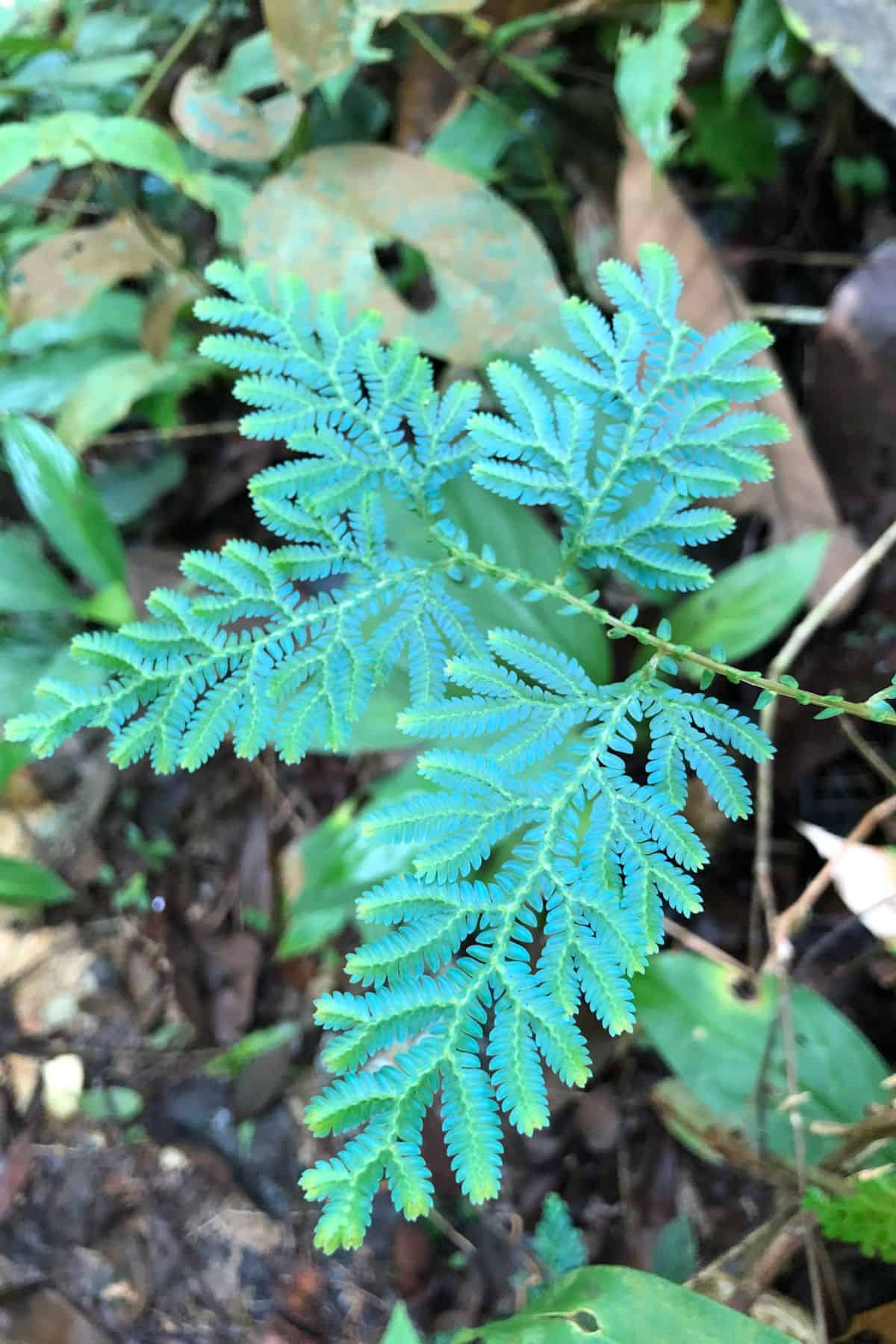Selaginella kraussiana ‘Aurea’ is certainly an enigmatic plant.
Classified somewhere between a moss and a fern (and though technically neither), it displays characteristics of both.
With “kraus” aptly translating to curly/crinkly, it’s most easily described as an unruly shingling vine that forms dense carpets of feathery foliage.
The ‘Aurea’ cultivar is a beautiful twist on the classic, and while I wouldn’t say it’s a gold color, it’s certainly a beautiful bright, yellow-toned green. This, of course, being the inspiration for its common name, Golden Clubmoss.
So, let’s jump into the gold-standard care tips!

Where to Buy Selaginella kraussiana ‘Aurea’
See the links below to purchase from reputable terrarium plant shops and marketplaces (may include affiliate links).
Golden Clubmoss Care & Growth
| Plant Type | Moss |
| Lighting | Low – high indirect light |
| Temperature | 55-80°F (12-26°C) |
| Watering | Regular, even moisture |
| Humidity | Medium – high humidity (50-90%) |
| Growth | 1-5 inches |
Lighting
When it comes to lighting, Selaginella kraussiana is one seriously low-maintenance plant.
While it’ll thrive in brighter light (resulting in faster growth and brighter foliage), it will be absolutely fine in a shady spot.
Situated on the lowest levels of the forest floor in the wild, it’s a true low-light species.
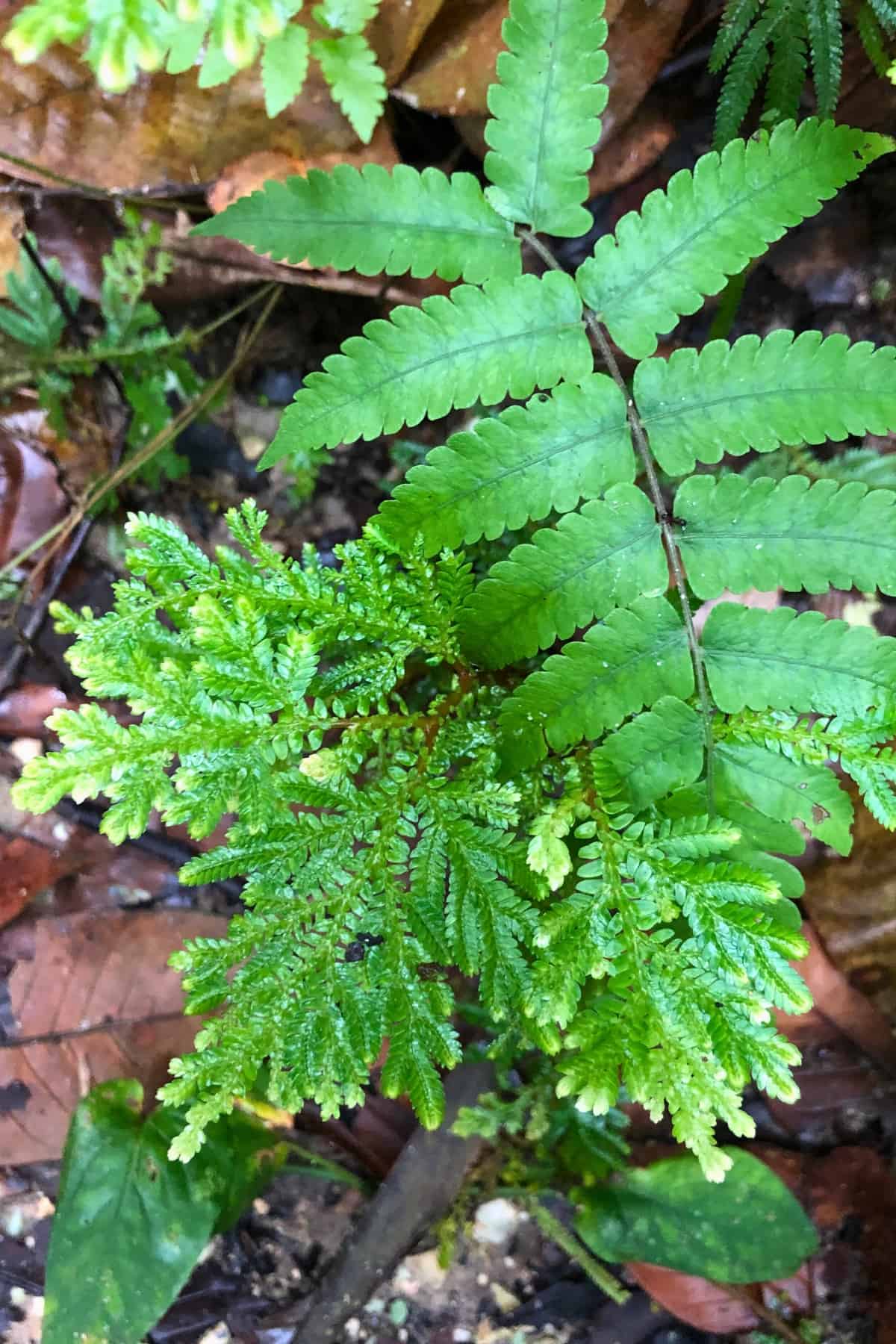
It’ll be happy, provided you:
- Make sure it has at least some light.
- Keep it out of direct light.
It will quickly scorch in direct sunlight, so be careful to keep it out of any harsh rays.
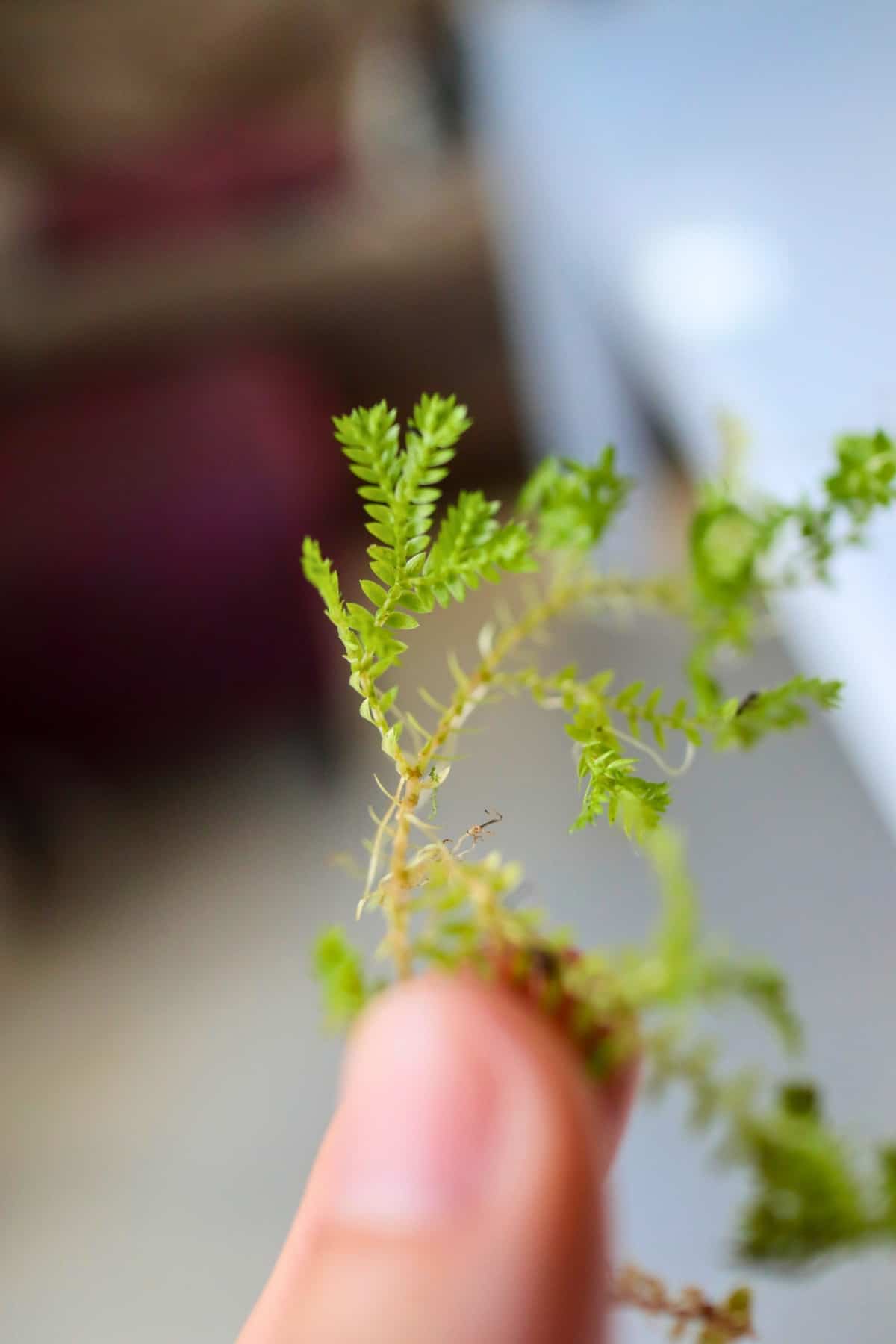
Watering
The key to watering Selaginella kraussiana ‘Aurea’ is keeping it moist but never soggy.
I’d really pinned this as a “you can’t overwater it” kind of plant, but my experience has led me to believe that very much isn’t the case.

It will suffer if allowed to dry out, yes, as with many tropical plant species, being sat in wet substrate can – and will – quickly lead to rotting.
Proper drainage and a quality substrate will go a long way in mitigating this risk. (As will a high relative humidity, but more on that in a moment).
You can do this by choosing a pot with a drainage hole or by building a drainage layer into a terrarium.
To create this in-built protective layer in your terrarium, use a layer of leca balls and a thin mesh on top.
Best Substrate & Soil
As you’ve probably guessed, Golden Clubmoss will readily grow in a substrate that retains lots of moisture and drains well.
In fact, it doesn’t even need to be soil – it’ll happily grow on top of moss and even hardscape, provided it’s moist enough.
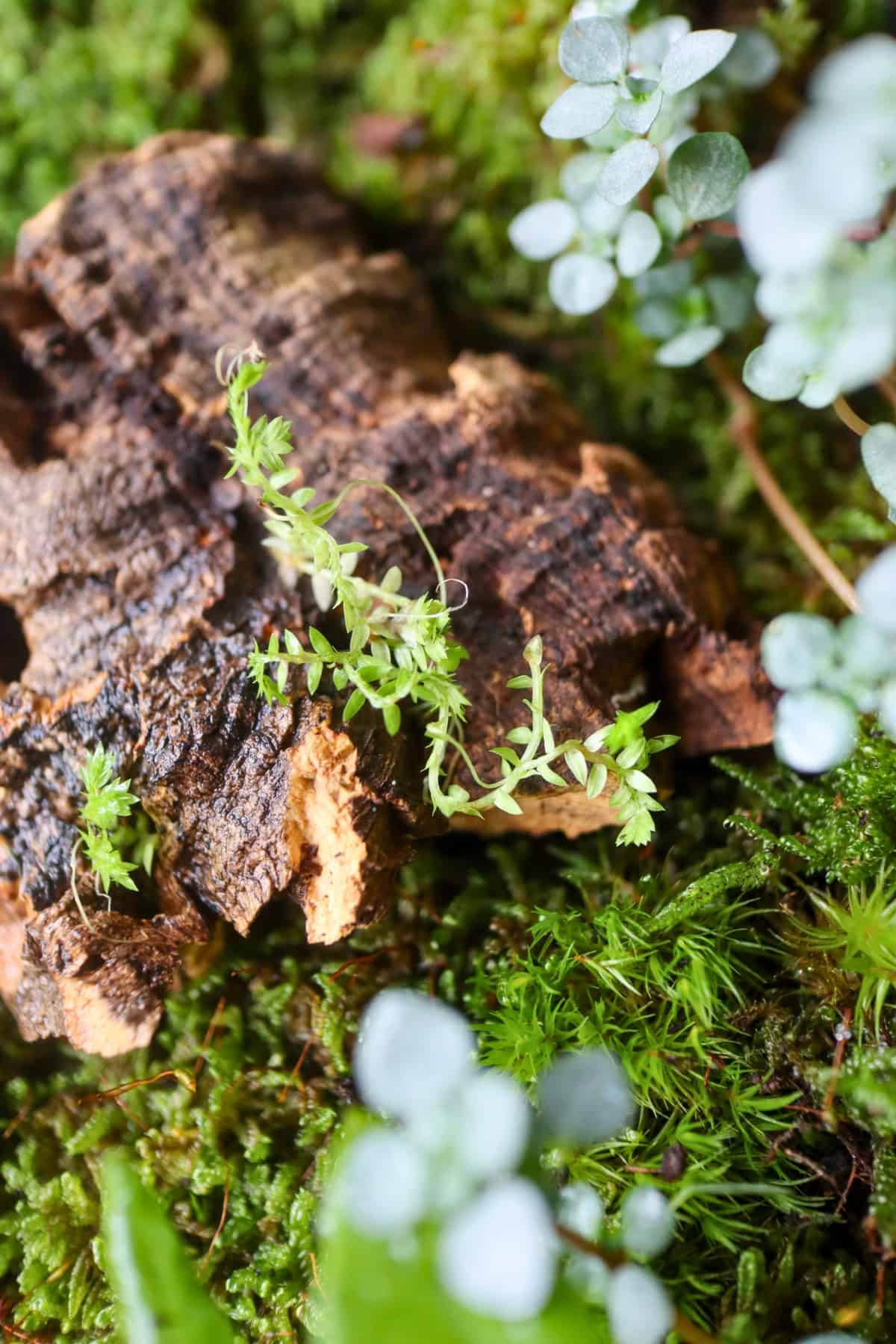
If you’re planting it directly into the soil, I’d argue substrate choice is the most important choice in making this plant happy.
Drainage holes or layers can’t work their magic if your soil doesn’t drain well in the first place.

To combat this, choose a light yet moist substrate.
👉 Our custom soil mix is ideal.
It has coco coir to boost hydration, earthworm castings for nutrients, and orchid bark and horticultural charcoal for drainage.
Temperature & Humidity Requirements
Selaginella kraussiana ‘Aurea’ thrives with warm temperatures and high relative humidity.
Though being native to both tropical and sub-tropical African regions, it can tolerate a reasonable range of temperatures.
If you were to experience any problems with this plant, temperature is extremely unlikely to be the cause.
On the other hand, it’s much more sensitive to humidity levels; if you’re keeping it as a houseplant, be sure to keep the room above 50%.
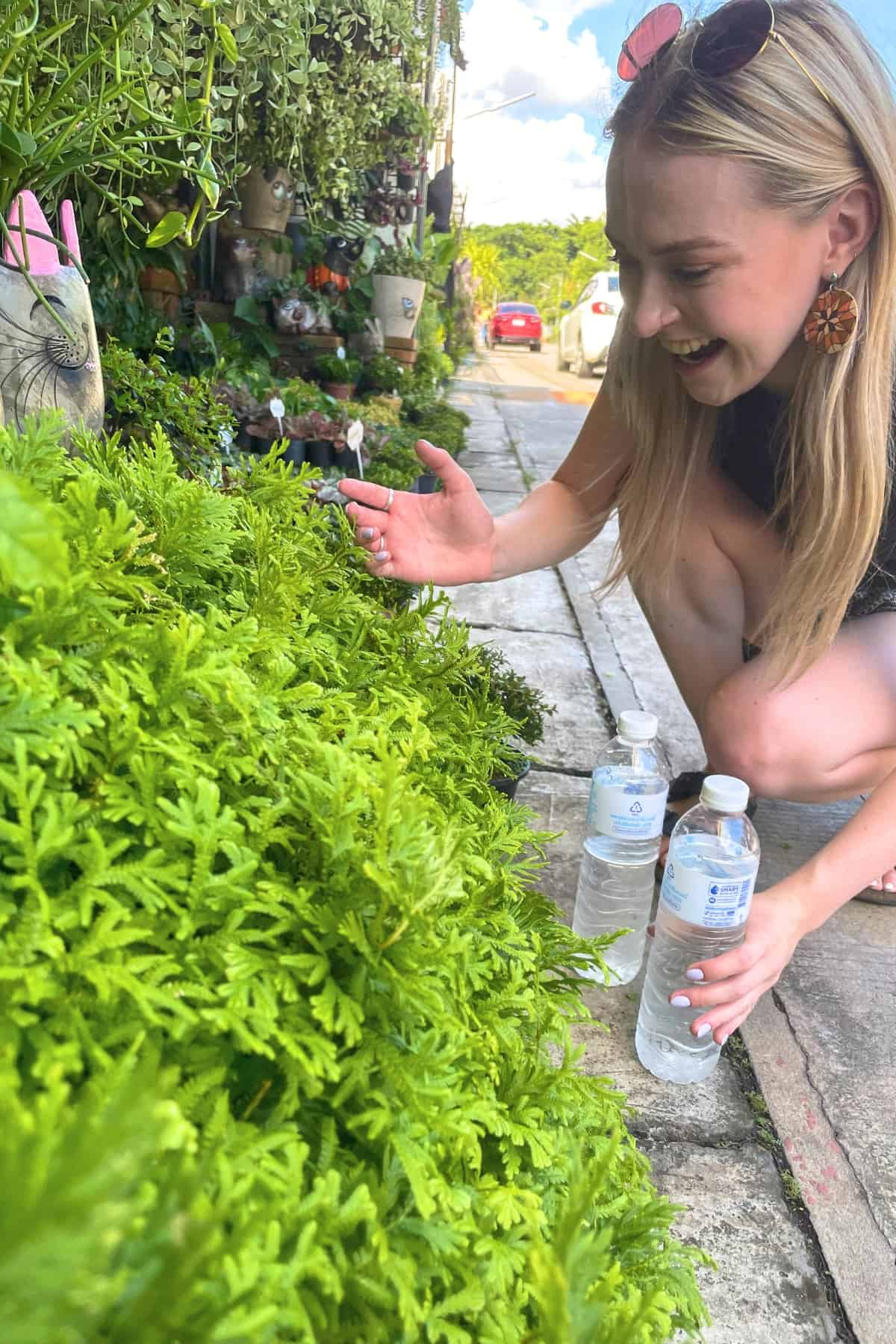
Of course, a closed terrarium environment is a great way to consistently meet these needs, and they look fantastic (so what are you waiting for?).
Growth
Under the right conditions, Golden Clubmoss is a quick grower and will rapidly form a thick carpet.
However, this speed, paired with its irregular growth pattern, can lend itself to getting a little out of hand in a closed terrarium environment. So it can benefit from the occasional trim to keep its size and shape in check.
Similar to the likes of Ficus pumila, if you buy a Selaginella kraussiana ‘Aurea’ cutting, it’ll grow so much that you’ll have enough to populate terrariums for years to come.
Being such a great carpeting option for terrariums, who’s complaining?

How to Propagate Golden Clubmoss
Similar to their moss and fern friends, Selaginella are spore-producing plants.
So, as you can imagine, in tropical environments, it’s not too uncommon to find this stuff growing everywhere.
Luckily, in the home, you needn’t wait for it to reproduce by itself. It’s an extremely easy plant to propagate via stem cuttings.

Snip off a section (don’t worry if it’s rooted or not) and place it wherever you’d like it to establish in a closed terrarium, either directly on top of moss, substrate or a moisture-retentive piece of hardscape.
Then just sit back and let it work its magic – it will readily root up in the high humidity.
Alternatively, if you don’t have a terrarium you’d like to put it in, you can place it on top of some moist sphagnum moss in some Tupperware.
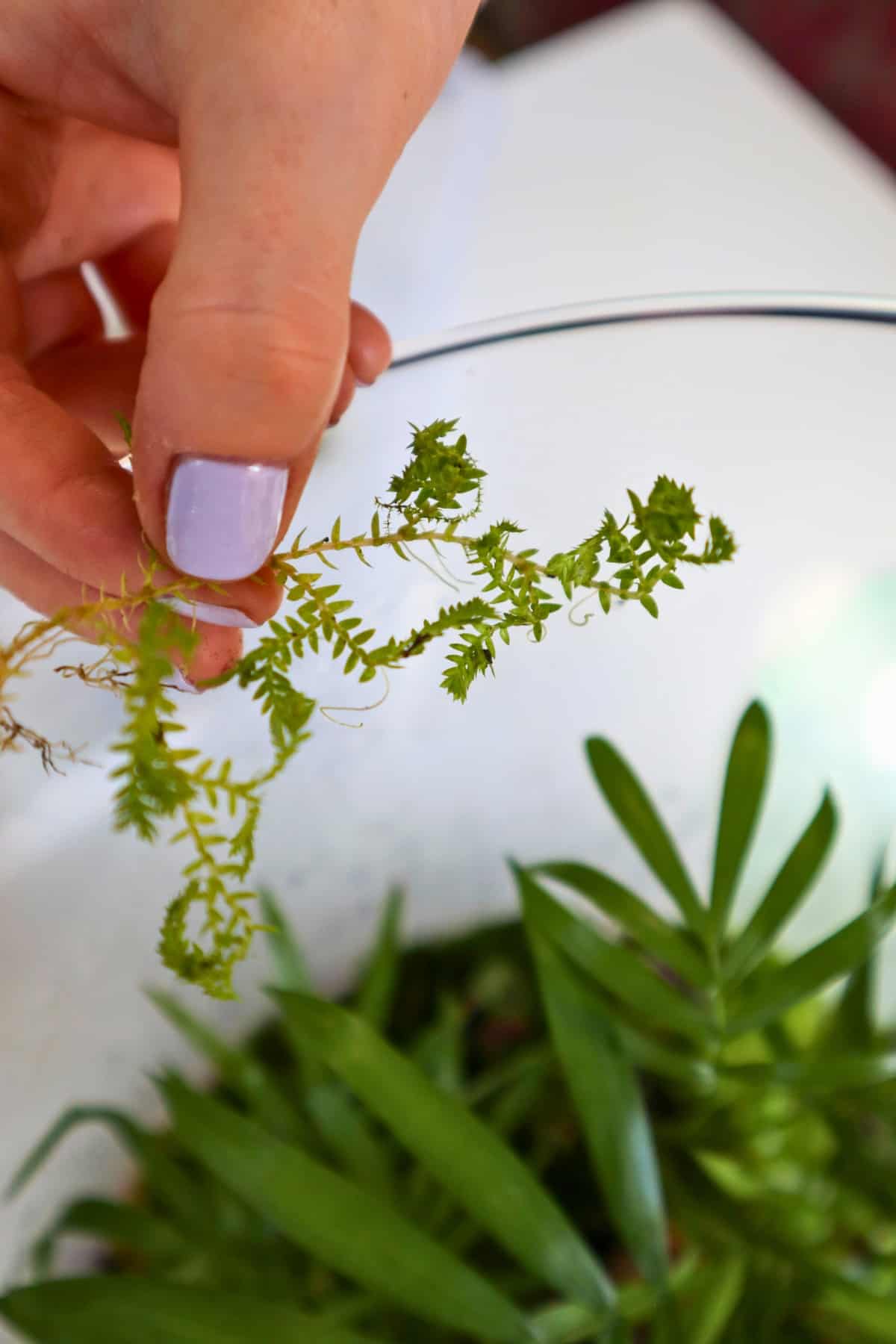
Varieties & Similar Plants
There are over 700 species of Selaginella but only a few notable cultivars of kraussiana.
Selaginella kraussiana ‘Variegata’ is characterized by its “frosted” appearance (which looks almost Christmassy to me), and Selaginella kraussiana ‘Brownii’ is prized for its frilly mounds of leaves.
If you want something a little different, why not try the stunning blue Peacock Spikemoss Selaginella uncinata?
